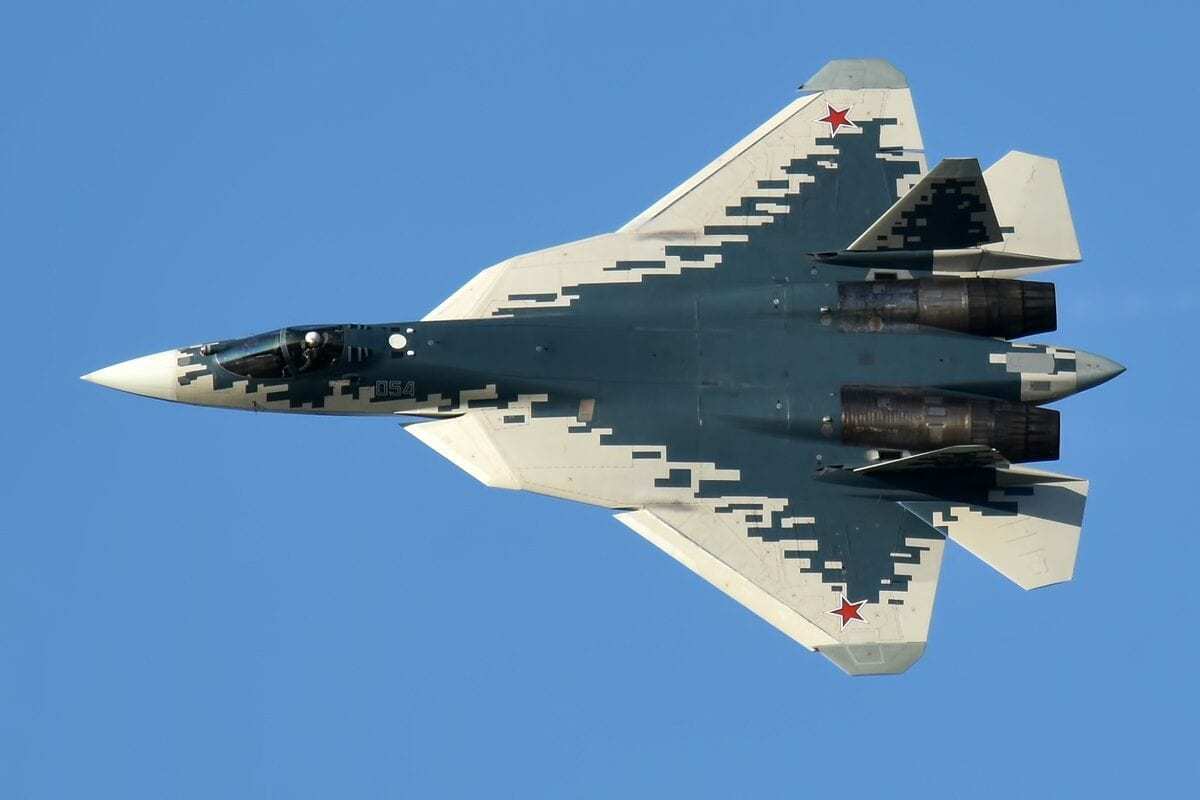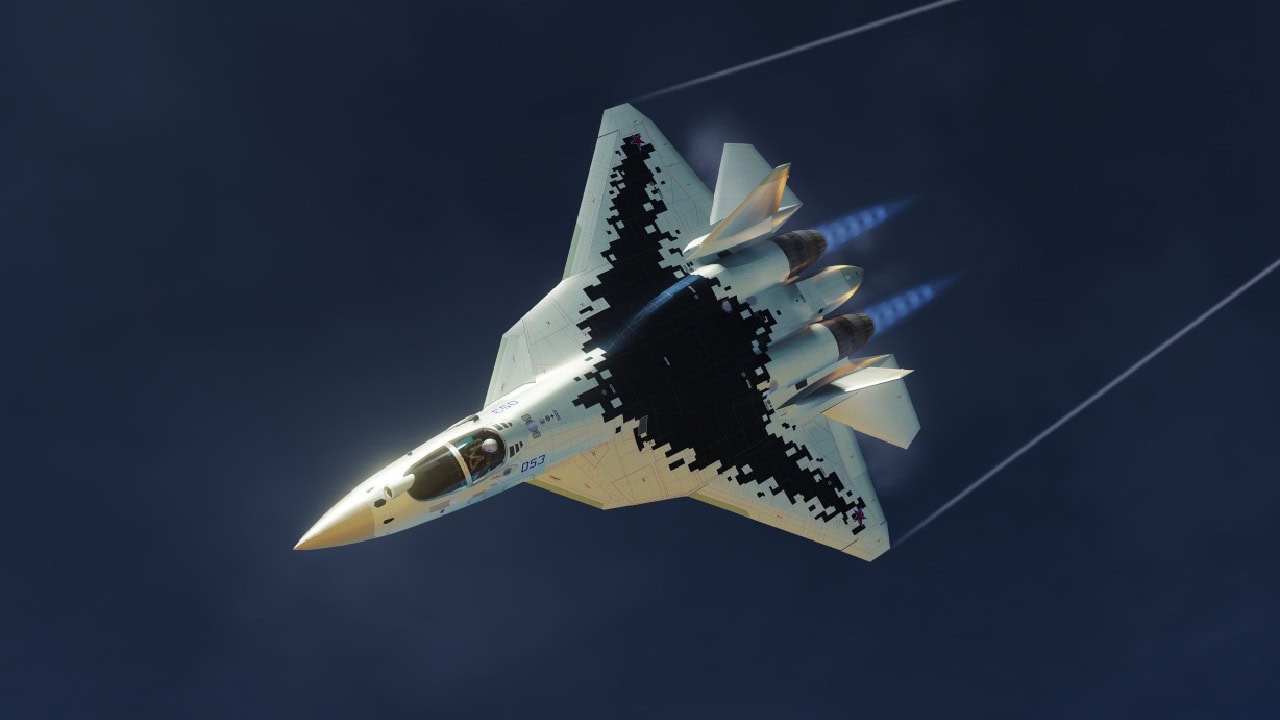Besides having significant troubles concerning his war in Ukraine, Putin would love to see his military thrive. Sadly, the Su-57 Felon stealth fighter will not be part of any new Russian military reboot anytime soon as Putin does not have the money to build the plane in the numbers needed to take on America’s best stealth fighters:
Russia’s Su-57 stealth fighter has been hit with problem after problem and likely will never be built in mass like the F-22 and F-35.
Can the Su-57 program be saved?
Finally, four new serial Su-57s were produced, inspiring a bit of optimism regarding Russia’s beleaguered fifth-generation fighter program.
Russia’s Fifth-Generation Multirole Fighter
The Sukhoi Su-57 “Felon” is a twin-engine, multirole stealth fighter. The fifth generation fighter is the result of a program – known as the “prospective aeronautical complex of front-line air forces” – that was initiated in 1999. Despite Russia’s long history of aerospace design, the Su-57 was the first Russian aircraft ever designed around stealth technology.
Capable of performing both aerial combat – or dogfighting – as well as ground and maritime strike missions, the Su-57 was designed to be versatile. Worthy of the fifth-generation designation, the Su-57 incorporates stealth, supercruise, supermaneuverability, integrated avionics, and an internal payload.
Understandably, developing an aircraft as novel and advanced as the Su-57 took time and resources. To test new systems and concepts, Sukhoi relied on existing airframes. For example, the Su-47 was used to test an internal weapons bay; the Su-27M was used to test the engine and flight control systems. By 2004, the Su-57 (known during testing as the T-50) had an agreed upon design and shape, which the Ministry of Defence had approved. Prototype aircraft went into development for flight testing.
Production Has Been Delayed a Few Times
The Su-57 was supposed to make its maiden flight in 2007. But problems, which the Russians initially kept secret, delayed the first flight, year after year. Over time 2007 turned into 2008, which turned into 2009, and still, the Su-57 did not fly. In late 2009, the Russians acknowledged that problems with the engine caused the delays – but that a first flight should take place before the end of the year.
The maiden flight wouldn’t occur until January 2010, when test pilot Sergey Bogdan took the Su-57 for a 47-minute spin. From there, the program moved slowly. While six flying prototypes were initially planned, the program ultimately built ten aircraft; six were deemed inadequate because of the aircraft’s susceptibility to fatigue; the airframe would crack during early testing. Structural deficiencies were addressed, redesigning the Su-57 with increased composite materials, an elongated tail “sting,” and a slightly larger wingspan.
Redesign was Necessary, and Caused Further Delays
Even with the redesigns, the Felon program has struggled. Russian procurement ambitions have been steadily lowered. Initially, the Ministry of Defence had planned to procure 60 production Su-57s. The 60-plane target was lowered incrementally, time and time again. Today, decades overdue, only a handful of Su-57s have entered service. But as Tass reported, on Aug 16, the Su-57 program seems to be moving in the right direction, albeit slowly and way overdue.
“Four serial-produced Su-57 fifth-generation multirole fighter jets have been built today under a state contract with Russia’s Defense Ministry,” United Aircraft Corporation CEO Yury Slyusar told Tass. “Under a state contract with the Russian Defense Ministry for the serial production of Su-57s, four aircraft have been built as of today. This year, there are plans to deliver the next batch of planes. The United Aircraft Corporation fulfills work with subcontractors in accordance with the state contract signed.”
Currently, the plan is to continue producing the oft-delayed fighter. “Russia’s Aerospace Force will receive 22 Su-57 fighters by late 2024 and their numbers will increase to 76 by 2028,” Tass reported. “The first Su-57 fighter was delivered to the Russian troops in 2020.”
The Su-57 made headlines earlier this year, when a CGI-rendered version appeared in the blockbuster film Top Gun: Maverick. In Top Gun, the Su-57 was referred to vaguely as the enemy’s fifth-generation fighter – but clearly, the plane depicted was the Su-57.

Russia’s Su-57 (Image Credit: Sukhoi Design Bureau, 054, Sukhoi Su-57)
As Top Gun has become the highest-grossing film of the year – and Tom Cruise’s highest-grossing film ever – the Felon has enjoyed a bit of mainstream exposure. In the film, a Cold War era F-14 Tomcat bested two Su-57s.
The scenario was implausible – and likely irritating to Russia, who is perhaps already sensitive with respect to their way-behind-schedule Felon.
Harrison Kass is a Senior Defense Editor at 19FortyFive. An attorney, pilot, guitarist, and minor pro hockey player, he joined the US Air Force as a Pilot Trainee but was medically discharged. Harrison has degrees from Lake Forest College, the University of Oregon School of Law, and New York University’s Graduate School of Arts & Sciences. He lives in Oregon and regularly listens to Dokken.

